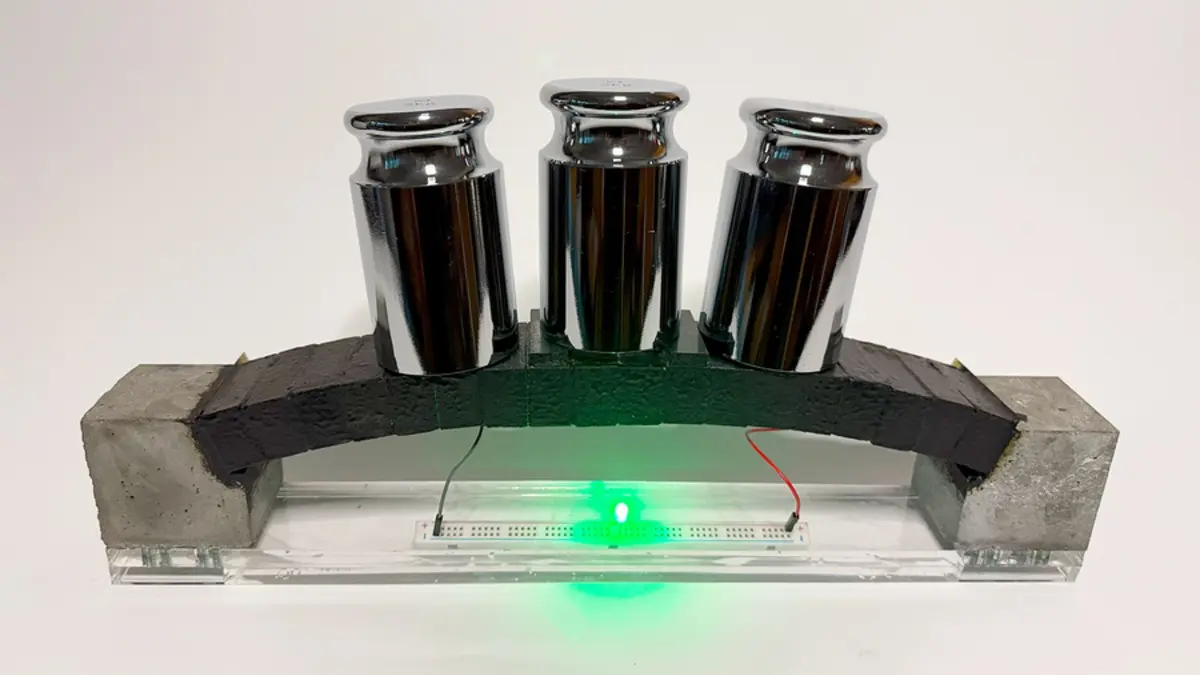By Futurist Thomas Frey
Imagine driving past a building and not just seeing its windows, doors, and facade—but glimpsing the stored energy humming inside its very walls. In a radical shift from mere structure to energy infrastructure, MIT researchers have developed a new form of concrete—electron-conducting carbon concrete (ec³)—that stores and discharges electricity, elevating walls, sidewalks, and foundations into living batteries. Their latest prototype improves energy density ten-fold over prior versions.
This is more than a clever trick. It’s a tectonic redefinition of how we build, live, and power the future.
From Unseen Storage to Every Surface
Concrete is the world’s most ubiquitous building material. For centuries, it’s carried weight, resisted weather, and stretched over horizons of cities. But it has never stored energy—until now.
The ec³ innovation combines cement, water, ultra-fine carbon black, and electrolytes to form a conductive nanonetwork inside the concrete matrix. That network enables the material to act as a supercapacitor, with the ability to absorb, hold, and release charge over several hours—not just milliseconds.
Thanks to optimized electrolytes and nanostructure imaging, the team cut the required volume for everyday energy storage dramatically. In earlier designs, a home’s daily energy demand might require 45 cubic meters of energy-storing concrete. Now, that shrinks to about 5 cubic meters—a volume comparable to a basement wall.
To put that in perspective: each cubic meter can store over 2 kWh — enough to run a refrigerator for a day.
Rethinking Infrastructure: Power, Structure, and Intelligence
What happens when every building, bridge, sidewalk, and barrier is also a battery? The consequences ripple across every dimension of civilization:
1. Dual-Use Infrastructure
A wall is no longer passive—it carries load and energy. Streets, parking lots, and public spaces become reservoirs of electricity, distributed across the grid invisibly.
2. Embedded Resilience
Disasters that knock out centralized energy systems—storms, blackouts, grid failures—would be less deadly. Neighborhoods built with ec³ become microgrids with built-in storage capacity.
3. Democratized Access
This technology sidesteps many problems of remote or off-grid areas. Where transmitting energy to distant zones is costly, the walls themselves might house the storage. With no dependency on exotic battery supply chains, the barrier to entry is dramatically lower.
4. Smart Infrastructure
Because the nanonetwork responds to stress—micro-cracks, structural loads, shifting masses—the ec³ material can act as its own health sensor. Imagine walls that dim or flicker under load, signaling wear, strain, or damage in real time.
5. New Business Models
The economics shift: selling energy becomes selling “storage infrastructure as material.” Construction firms become power utilities. Architects become energy strategists. Real estate incorporates kilowatt-hours, not square feet, as a metric of value.
The Technical Grand Canyon
But this vision is not without its obstacles.
- Energy density vs. weight: While 2 kWh per cubic meter is remarkable, it still trails chemical batteries. For large-scale storage, the scale-up challenge remains steep.
- Charge-discharge cycles: Unlike conventional batteries, concrete-based supercapacitors may behave differently over thousands of cycles. Longevity, stability, and retention must be proven.
- Material compatibility: Not all structures, mixes, or climates will adapt to ec³. Different formulations might be needed for coastal, seismic, or extreme temperature environments.
- Integration infrastructure: Wiring, connectors, busbars, insulation, and electronics must be seamlessly embedded without undermining structural integrity.
- Regulation, codes, and adoption inertia: Building codes, energy regulations, and safety standards will need to be rewritten. The conservative nature of construction could slow adoption.
Yet these challenges feel evolutionary, not fatal.
2040: Cities That Power Themselves
If all of this falls into line by mid-century, the map of cities might be redrawn:
- Buildings supply themselves, not just via rooftop solar, but via the concrete frames themselves.
- Infrastructure (roads, bridges) becomes active, storing energy from passing electric vehicles, solar rails, or ambient generation.
- Microgrids, once niche, become default. Decentralization turns from ideal into baseline.
- The need for massive external battery factories shrinks, as every structure becomes a participant.
- Energy equity widens. Communities previously considered “behind the grid” gain internal storage capacity without massive capital outlays.
Final Thoughts
With ec³, we’re not just upgrading concrete—we’re upgrading civilization’s spine. The walls around us will one day hum with purpose, not just support. Energy, once produced in distant plants and transmitted through fragile grids, will exist in the very bones of cities.
This is the next frontier of energy. A future where architecture doesn’t just shelter life—it powers it.
Read more on related topics:
- Structural Battery Composites Are Turning Vehicles into Energy Storage
- The Industrial Metaverse and Energy-Integrated Infrastructure


